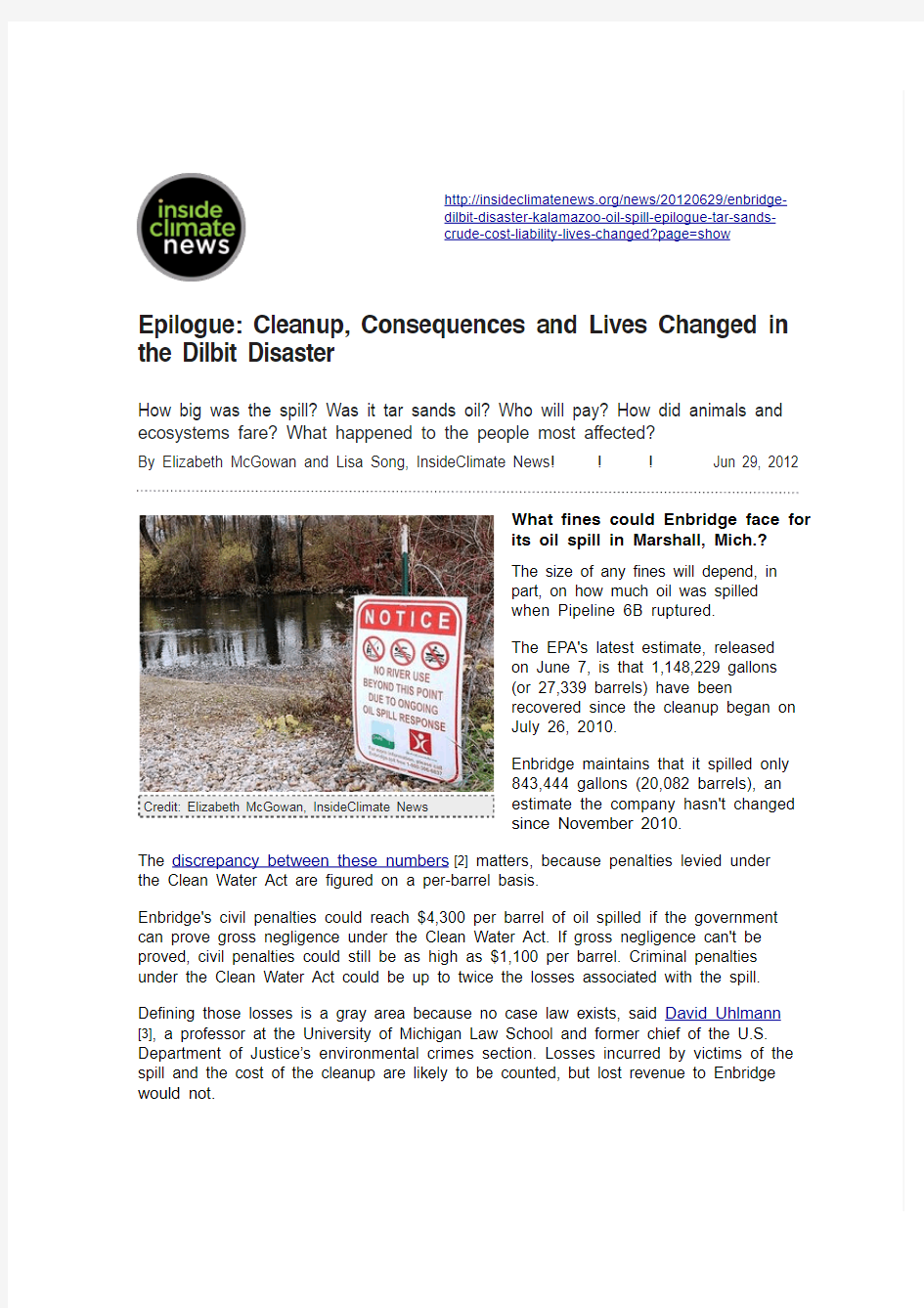普利策新闻奖获奖作品1(4)

- 1、下载文档前请自行甄别文档内容的完整性,平台不提供额外的编辑、内容补充、找答案等附加服务。
- 2、"仅部分预览"的文档,不可在线预览部分如存在完整性等问题,可反馈申请退款(可完整预览的文档不适用该条件!)。
- 3、如文档侵犯您的权益,请联系客服反馈,我们会尽快为您处理(人工客服工作时间:9:00-18:30)。
Generally, the government chooses either criminal or civil penalties except in the most egregious cases, such as the Gulf spill, Uhlmann said.
Fines also could be levied against Enbridge under the Pipeline Safety Act. If federal authorities find that the company violated any of the standards set by that legislation, it could face civil penalties of $200,000 per violation per day. At a minimum, the penalties would likely include the days 6B was leaking.
Criminal penalties under the Pipeline Safety Act are similar to those under the Clean Water Act: up to twice the losses associated with the spill. Federal authorities would have to prove knowing and willful violations to levy a criminal fine under the Pipeline Safety Act but only would need to show simple negligence under the Clean Water Act.
The results of the National Transportation Safety Board's investigation of the spill will likely factor significantly into the levying of penalties. That report will be released on July 10, according to the NTSB.
Just as the government isn't required to accept Enbridge's estimate of the number of barrels spilled, neither is Enbridge required to agree to the government's estimate. If the federal government and Enbridge go to court, the number of barrels spilled would be determined at trial.
Uhlmann predicts a settlement, not a trial, is the most likely outcome with this case. If so, the number of barrels spilled and the fine levied per barrel are negotiable. Uhlmann expects the government would insist on its estimate in exchange for a slightly lower fine per barrel.
Enbridge's price tag for the spill is already $765 million, with $650 million covered by the company's insurance. That insurance doesn't cover fines or penalties.
What happened to the oil and debris that was hauled away from the spill site?
Enbridge said it was able to recycle 766,288 gallons (18,245 barrels) of the oil it vacuumed up shortly after the spill. It returned the oil to 6B, which reopened two months after the spill.
Contaminated soil and debris that was collected was disposed of off-site. According to the EPA, so far crews have disposed of 17,109,012 million gallons of oiled water and 187,041 cubic yards of oil-contaminated soil, downed logs and other debris.
The 766,288 gallons of oil that Enbridge recycled—plus the amount of oil the EPA estimates was trapped in the oily water and debris—is how the agency calculated its latest figure of 1.14 recovered gallons.
Was the Oil in 6B Tar Sands Oil?
About 75 percent of the oil that spilled from 6B was a type of dilbit called Cold Lake blend. In an email to InsideClimate News, Enbridge spokesman Jason Manshum made
